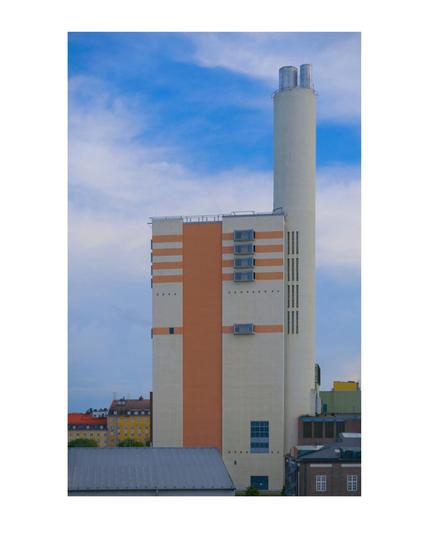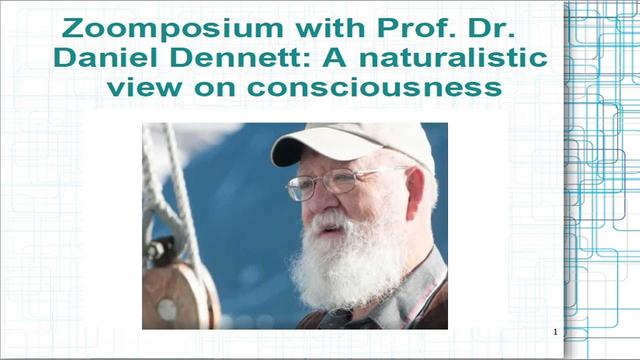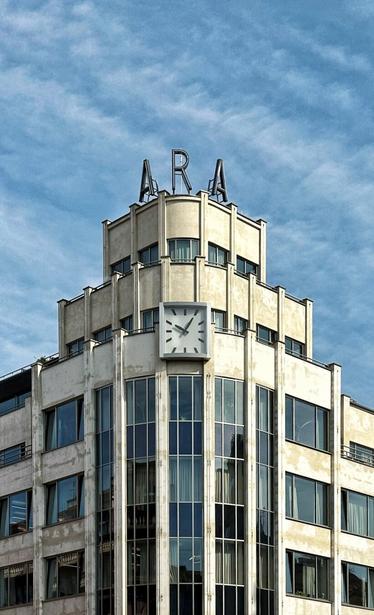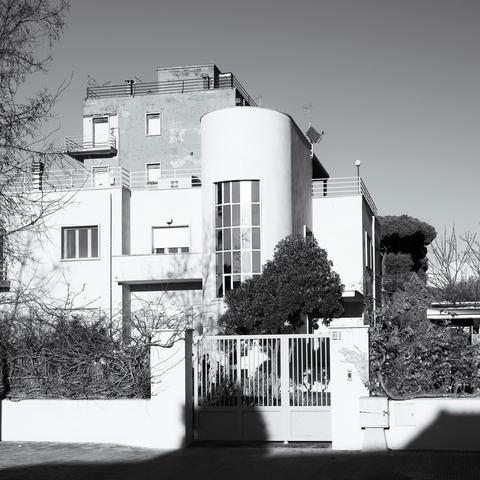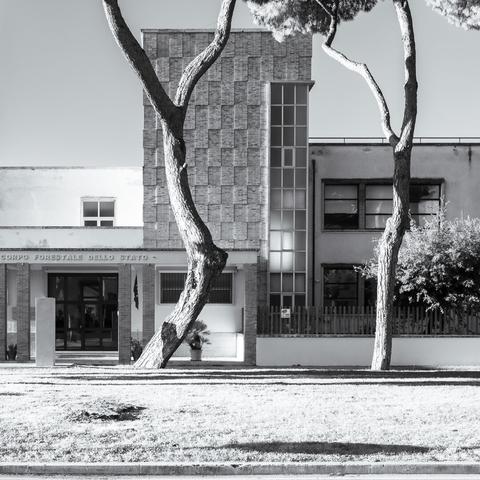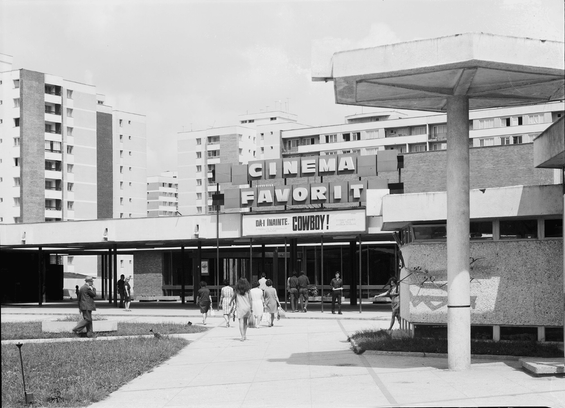#functionalism
Stripes in the sky
#KeepOnTruckin #industrial #architecture #urban #pastels #minimalism #lines #colorphotography #functionalism #urbangeometry #norrköping #nkpng #sweden #Industrial
🧠🔧 Functionalism—the key to understanding the mind? Or a modern misconception?
#Functionalism and our understanding of the #mind: the #brain as software, #humans as #programs, #consciousness as a kind of #code.
A #Zoomposium with #ThomasFuchs on #embodiment, #AI, #neuroconstructivism, and the #future of our #view of humanity.
🎥 https://youtu.be/1ouxs6P3Enc
📎https://philosophies.de/index.php/2022/11/20/das-verkoerperte-bewusstsein/
#EmbodiedConsciousness #PhilosophyOfMind #CognitiveNeuroscience
#Consciousness – The Brain’s #UserIllusion, Explained!🧠✨
What if consciousness isn’t the “captain” of our #thoughts — but just the dashboard we use to navigate them?
📽 Interview: https://youtu.be/M2qiVz95ZYk
📎 Information: https://philosophies.de/index.php/2023/12/25/naturalistic-view/
#Zoomposium #DanielDennett #Consciousness #UserIllusion #PhilosophyOfMind #CognitiveScience #Neuroscience #Qualia #FreeWill #ArtificialIntelligence #AGI #Embodiment #Functionalism #Materialism #Naturalism #MindAndMachine #Cognition #IllusionOfSelf
🌈 Color is an illusion!
Atoms have no color—our brains create it.
In our Zoomposium, we talk with recently deceased Daniel C. Dennett about consciousness, qualia, and why perception is about interpretation, not direct reality.
📽 Interview: https://youtu.be/M2qiVz95ZYk
📎 Information: https://philosophies.de/index.php/2023/12/25/naturalistic-view/
#DanielDennett #ConsciousnessExplained #PhilosophyOfMind #Zoomposium #CognitiveScience #AGI #Qualia #CognitiveNeuroscience #ArtificialIntelligence #Embodiment #Functionalism #RealPatterns
Modular NAS system by Gridstack
#design #industrialdesign #technology #nas #minimalism #functionalism #modular #aesthetics
What is a non-functional account of consciousness supposed to be?
I’m a functionalist. I think the mind and consciousness is about what the brain does, rather than its particular composition, or some other attribute. Which means that if another system did the same or similar things, it would make sense to say it was conscious. Consciousness is as consciousness does.
Functionalism has some advantages over other meta-theories of consciousness. One is that since we’re talking about functionality, of capabilities, establishing consciousness in other species and systems is a matter of establishing what they can do. But it does require accepting that consciousness can come in gradations. And that “consciousness” is not a precise designation of which collection of functionality is required. So it means giving up primitivism about consciousness, accepting that rather than a single natural kind, it’s a hazy collection of many different kinds.
It’s worth pausing to be clear on what functionalism is. It’s about cause-effect relationships. These relationships can, in principle, be modeled by Ramsey sentences, a technique David Lewis adapted from Frank Ramsey, which models a causal sequence, or entire structures of those sequences. (Suzi Travis has an excellent post which includes an introduction to them.) At the heart of the entire enterprise are these cause-effect relations.
Of course, cause-effect relations are themselves emergent from the symmetrical (reversible) structural relations of more fundamental physics. Causes and effects attain their asymmetry due to the Second Law of Thermodynamics, the one that says entropy always increases. So another way to talk about functionalism is in terms of structural realism. Ultimately functionalism is about structural relations. (Something it took me a while to appreciate after discovering structural realism.)
Over the years, I’ve received a lot of different reactions to this position. Not a few aren’t sure what functionalism is. Some are outraged by the idea. Others equate it with behaviorism. (Unlike behaviorism, functionalism accepts the existence of intermediate states between stimuli and response.)
But occasionally someone responds that the idea is obvious and trivial. I think this response is interesting, because I basically agree. It is trivial, or it should be. I only started calling myself a functionalist because so many people insist that the real problem of consciousness isn’t about functionality.
Philosophers have long argued for a version of consciousness that is beyond functionality. Ned Block, when making his distinction between phenomenal and access consciousness, while admitting there were functional notions of phenomenal consciousness, argued for a version that was something other than functionality (or intentionality, which is also relational). And David Chalmers argues that solving the hard problem of consciousness isn’t about solving the structure and relations that science can usually get a handle on.
Anyone who’s known me for a while will be aware that I think these views are mistaken. But I have to admit something. Part of the reason I’m not enthusiastic about them is I don’t even know what a non-functional view of consciousness is supposed to be.
I understand old school interactionist dualism well enough. But in that case there are still causes and effects. It’s just that most of them are hidden from us in some kind of non-physical substrate. But the interaction in interactionist dualism should be detectable by science, and hasn’t been, which I think is why many contemporary non-physicalists gravitate to other options.
It’s when we get to views like property dualism and panpsychism that I start to lose understanding. We’re supposed to be talking about something beyond the functionality, beyond structure and relations, something that could be absent without making any difference in functionality (philosophical zombies), that could change without change in functionality (inverted qualia), or is in principle impossible to observe from any perspective other than the subject’s (Mary’s room). It’s not clear to me what exactly it is we’re talking about here.
This view has epiphenomenal implications, that consciousness is causally impotent, making no difference in the world. It’s interesting that the arguments to avoid this implication inevitably sneak functionality back into the picture. One option, explored by David Chalmers in his book: The Conscious Mind, is that consciousness is causality, which strikes me as a very minimal form of functionalism. Another, one Chalmers favors, is the Russellian monist notion that consciousness, or proto-consciousness, sits in the intrinsic properties of matter, and is basically the causes behind the causes, which again, seem to amount to a form of hidden functionalism.
But these arguments aside, it’s still unclear what exactly it is we’re talking about. It’s frequently admitted that no one can really say what it is. However, it’s typically argued that we can point to various examples to make it clear, such as the redness of an apple, the painfulness of a toothache, seeing black letters on a white page, the taste of a fruit juice, imagining the Eiffel tower, etc.
The thing is, all of these examples strike me as examples of functionality. Redness is a distinction our visual system makes, making something distinct and of high salience, among other likely functions. A toothache obviously is a signal of a problem that needs to be dealt with. Black letters on a white page is pattern recognition to parse symbolic communication. The taste of a drink conveys information about that drink (good=keep drinking, bad=stop and maybe spit out). And remembering past experiences or simulating possible new ones, like imagining the Eiffel tower, has obvious adaptive benefits.
I’ve read enough philosophy to know the usual response. That’s I’m identifying the functional aspects of these experiences, but that the functional description leaves out something crucial. My question is, what? Of course, I know the typical response here too. It’s ineffable. It can’t be described or analyzed. Ok, how do we know it’s there? Each of us supposedly has first person access to it. But I just indicated that my own first person access seems to indicate only functionality. Impasse.
So I’m a functionalist, not just because I think it’s a promising approach, but because I really don’t understand the alternatives. Could I be missing something? If so, what?
#conscioiusness #functionalism #phenomenalConsciousness #Philosophy #PhilosophyOfMind
Basically, functionalism is the idea that a mental state is a functional state, one defined by a functional role... #philosophy #philosophyofmind #mind #Qualia #intentionality #functionalism #psychology #identitytheory #johnsearle #davidarmstrong
https://philosophyindefinitely.wordpress.com/2020/08/18/functionalism/
#architecturephotography #modernarchitecture #bnw #urban #urbanism #urbanphotography #midcentury #30s #functionalism #rationalism #italy #lazio #trees
#architekturfotografie #architektur #architecturephotography #modernarchitecture #bnw #urban #urbanism #urbanphotography #midcentury #30s #functionalism #rationalism #lazio #church
Incidentally, the Roman emperors wanted to drain the legendary Agro Pontino, and later the popes tried their hand at this task in vain.
However, it was not until the fascist government under Benito Mussolini that the swamp was transformed into fertile farmland. It is thanks in part to this technical and organizational achievement that a longing for the strong man or the strong woman can decide elections in today's Italy. Just as the governing skills of the fascists are valued more highly than those of all democratic parties. Stupidly.
#architekturfotografie #architektur #architecturephotography #modernarchitecture #bnw #urban #urbanism #urbanphotography #midcentury #30s #functionalism #rationalism #italy #lazio
However, the architect Mazzoni was politically flexible and owes his career not only to his apprenticeship with Mussolini's favorite architect Marcello Piacentini. He was also a staunch member of the Fascist party and enjoyed a brilliant career as chief architect of the Ministry of Communications and the national railroads until the end of the Second World War. The Stazione Termini in Rome and the Stazione Santa Lucia in Venice are just two of his prominent building projects from this period. So how should we evaluate these buildings? Can architecture be evil? How should the architecture of a fascist architect, which still characterizes the centers of many Italian cities, be viewed?
#architekturfotografie #architektur #architecturephotography #modernarchitecture #bnw #urban #urbanism #urbanphotography #concrete #midcentury #30s #fascism
Forum ran as a municipal cinema from 1946. The first movie shown was Disney´s Fantasia on October 4th 1946, the last was "#StarWars: Revenge of the Sith" on the night of May 19th 2005.
Was temporarily listed from 2006, and finally given full listed status in 2017. Is now owned by private investors who use it as a stage for theater, standup and large meetings, bound by law to keep it looking like it was outside and parts of the inside.
Photo by Norvin Reklamefoto, via University of Bergen Library: https://marcus.uib.no/instance/photograph/ubb-nor-l-0043.html
#Norway #Norwegian #NorskPix #Cinema #Architecture
The Trusk Phenomenon: Billionaires vs Democracy.
https://www.michaelcresswell.com/post/trusk-phenomenon
#Trusk #TruskPhenomenon
#Democracy #Oligarchy #PoliticalCorruption #Geopolitics #Billionaires #PowerAndInfluence #BillionairePolitics #WealthAndPower #CorporateInfluence #GlobalPolitics #HistoryRepeatsItself #Sociology #PoliticalTheory #ConflictTheory #Functionalism #EuropeanUnion #USAID #AmericanDemocracy #TariffWars #CriticalThinking #FutureOfDemocracy #ThoughtLeadership #SocialImpact
https://youtu.be/-iZRendmVIA
https://e-zeppelin.ro/norma-in-comertul-pre-89-complexurile-comerciale-din-anii-60/
#zeppelin #romanianarchitecture #modernism #film #documentary #architecturefilm #architectureinromania #socmod #socialistmodernism #postwararchitecture #functionalism #modernclassic #citeradieuse #commercialcomplex #zeppelinmagazine #zeppelinoverbucharest #zeppelincities #zeppelin❤️this
Cinema Favorit_Arhiva Mihai și Anca Oroveanu
